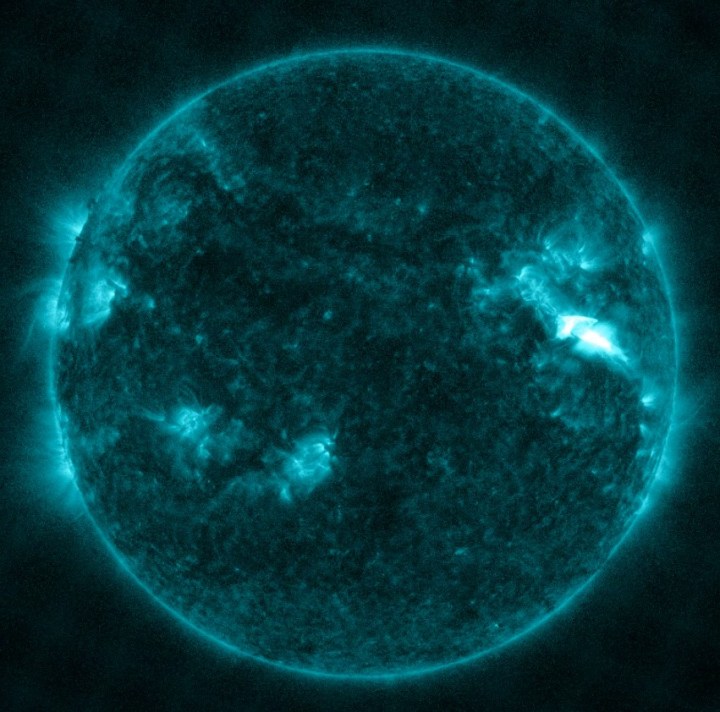The sun just let out a powerful solar flare — the most powerful since 2017, and among the most powerful recorded to date. It even affected communications on Earth, due to the effects of space weather resulting from the flare.
The event occurred at 12:02 p.m. ET on December 14, and was observed by NASA’s Solar Dynamics Observatory (SDO), a space-based mission launched in 2010 that orbits the Earth to study the sun. SDO captured not only a still image of the flare, seen as a white feature on the right-hand side of this image of the sun, but also video footage of the flare developing.

The image was taken using SDO’s Atmospheric Imaging Assembly (AIA) instrument, which observes the full face of the sun. It is colored teal to show a particular portion of the extreme ultraviolet part of the spectrum.
“This is likely one of the largest solar radio events ever recorded,” the Space Weather Prediction Center (SWPC) of the National Oceanic and Atmospheric Administration (NOAA) said in a statement. “Radio communication interference with aircraft were reported by multiple [National Weather Service] Center Weather Service Units (CWSU) co-located at [Federal Aviation Administration] facilities. These impacts were felt from one end of the nation to the other. Additionally, SWPC is analyzing a possible Earth-directed Coronal Mass Ejection (CME) associated with this flare.”
This flare was categorized as an X2.8 flare. The X indicates the class of flare, with X being the strongest and other less powerful classes being A, B, C, and M. The 2.8 number indicates the power of the flare within that class. While any X class flare is considered powerful by definition, previous flares have been observed at over X20, but these are very rare.
Researchers know that the power and frequency of solar flares varies with the solar cycle, an 11-year cycle of solar activity. We are currently in Solar Cycle 25, which began in 2019, with numbering beginning at the first measurements in 1755.
We will soon be heading into a period called the solar maximum, when the sun’s activity peaks in the cycle in 2024 or 2025, but the sun has already shown itself to be unusually active in this cycle.
Editors' Recommendations
- Total solar eclipse: NASA’s most important piece of advice
- How to safely watch April’s total solar eclipse, in person or online
- Asimov’s vision of harvesting solar power from space could become a reality
- How to watch SpaceX launch world’s most powerful rocket on Saturday
- World’s most powerful rocket clears safety review for next test launch




